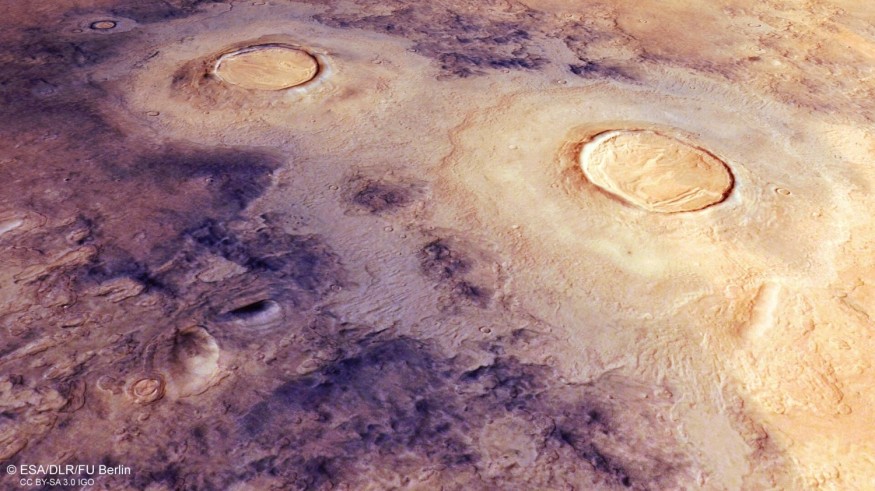Chinese scientists said water was likely present on Mars' surface more recently than previously imagined.
According to Space.com, water was found in samples from 700 million years ago thanks to hydrated minerals uncovered by China's Zhurong rover.
Researchers reported the rover's findings in the journal Science Advances. They detailed the results in their study titled "Zhurong reveals recent aqueous activities in Utopia Planitia, Mars."
According to Slash Gear, researchers from the Chinese Academy of Sciences examined data from the rover's microimaging camera and two spectrometers, which use light wavelengths to determine the composition of materials.
In the Mars samples, they discovered hydrated minerals, which means the minerals developed in the presence of water. They also observed layers of duricrust, a substance that develops when water is present.

China's Zhu Rong Rover Gathered Proof Mars Had Water More Recently
The current state of the Red Planet, which is cold and dry, was previously supposed to be wet during its Hesperian phase, some 3 billion years ago.
Recent discoveries, such as those from NASA's Mars Reconnaissance Orbiter, have cast doubt on this timescale, indicating that water may have existed as recently as two billion years ago in the form of salt crystals.
On the other hand, a Chinese Academy of Sciences experts believe that surface water activity continued long into the present Amazonian epoch.
The research, which used data from the Zhurong rover, appears to back up the idea that water was there for longer than previously assumed. It gathered information from Mars' Utopia Planitia area and detected hydrated sulfate/silica minerals, which give rocks their vivid hue.
Furthermore, the rocks were discovered on the surface. It might be a valuable resource for future crewed Mars expeditions that will require enormous volumes of water, Phys.org reported.
Water is essential for crewed missions as a source of drinking water for astronauts and as a rocket fuel for launching off the surface.
Water is too heavy to deliver in big amounts on a rocket voyage, so astronauts will have to discover a water source on Mars, according to Digital Trends.
The existence of "substantial" liquid, possibly from ground-water rising or subsurface ice melting, was identified using short-wave infrared spectral data taken by the Zhurong rover at the Utopia Planitia landing site.
About Zhurong Rover
PC Mag said Zhurong is the sixth rover to reach Mars, standing six feet tall and weighing roughly 530 pounds. The rover has explored around 1.24 kilometers and investigated various things during its more than 350 Martian sols (days).
The China National Space Administration (CNSA) extended its mission in August, allowing it to investigate the coastal Utopia Planitia area, a huge plain within the Solar System's biggest recognized impact basin.
The availability of water on Mars and simple access to it would be great news for humans wanting to visit the fourth planet from the Sun by 2030, as SpaceX President Gwynne Shotwell predicts.
RELATED ARTICLE : China Shares Stunning Footage of Tianwen-1 Flying on Mars Ahead of Chinese New Year [Watch]
Check out more news and information on Space in Science Times.
© 2025 ScienceTimes.com All rights reserved. Do not reproduce without permission. The window to the world of Science Times.












